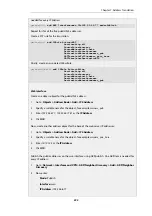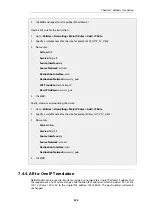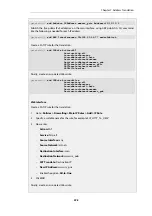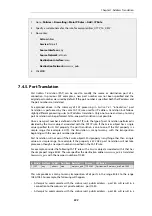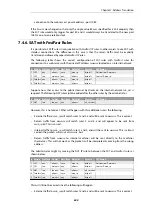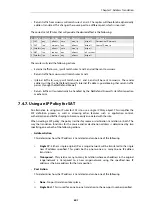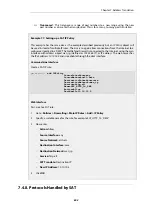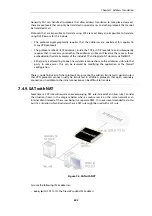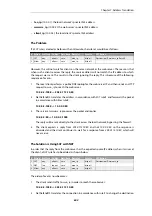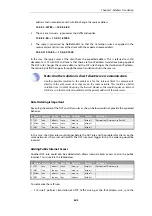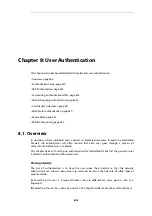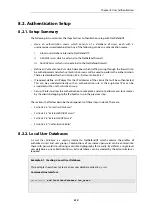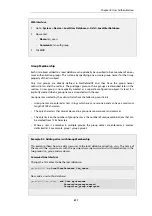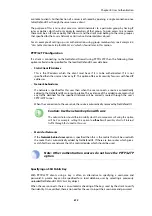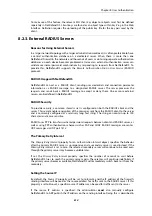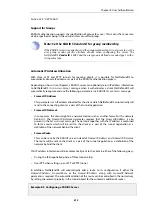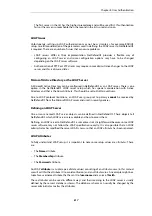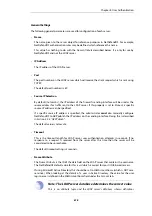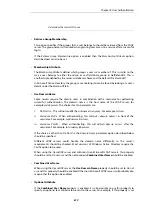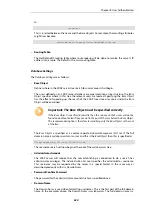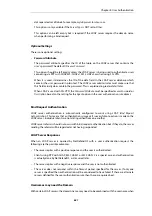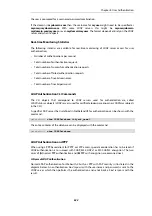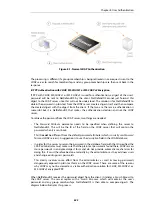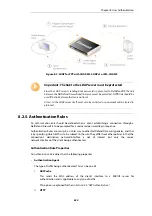
C. Something the user knows such as a password.
Method A may require a special piece of equipment such as a biometric reader. Another problem
with A is that the special attribute often cannot be replaced if it is lost.
Methods B and C are therefore the most common means of identification in network security.
However, these have drawbacks: keys might be intercepted, passcards might be stolen,
passwords might be guessable, or people may simply be bad at keeping a secret. Methods B and
C are therefore sometimes combined, for example in a passcard that requires a password or pin
code for use.
Making Use of Username/Password Combinations
This chapter deals specifically with user authentication performed with username/password
combinations that are manually entered by a user attempting to gain access to resources. Access
to the external public Internet through a NetDefend Firewall by internal clients using the HTTP
protocol is an example of this.
In using this approach, username/password pairs are often the subject of attacks using
guesswork or systematic automated attempts. To counter this, any password should be carefully
chosen. Ideally it should:
•
Be more than 8 characters with no repeats.
•
Use random character sequences not commonly found in phrases.
•
Contain both lower and upper case alphabetic characters.
•
Contain both digits and special characters.
To remain secure, passwords should also:
•
Not be recorded anywhere in written form.
•
Never be revealed to anyone else.
•
Changed on a regular basis such as every three months.
Chapter 8: User Authentication
609
Summary of Contents for NetDefendOS
Page 30: ...Figure 1 3 Packet Flow Schematic Part III Chapter 1 NetDefendOS Overview 30 ...
Page 32: ...Chapter 1 NetDefendOS Overview 32 ...
Page 144: ...Chapter 2 Management and Maintenance 144 ...
Page 284: ...Chapter 3 Fundamentals 284 ...
Page 392: ...Chapter 4 Routing 392 ...
Page 419: ... Host 2001 DB8 1 MAC 00 90 12 13 14 15 5 Click OK Chapter 5 DHCP Services 419 ...
Page 420: ...Chapter 5 DHCP Services 420 ...
Page 573: ...Chapter 6 Security Mechanisms 573 ...
Page 607: ...Chapter 7 Address Translation 607 ...
Page 666: ...Chapter 8 User Authentication 666 ...
Page 775: ...Chapter 9 VPN 775 ...
Page 819: ...Chapter 10 Traffic Management 819 ...
Page 842: ...Chapter 11 High Availability 842 ...
Page 866: ...Default Enabled Chapter 13 Advanced Settings 866 ...
Page 879: ...Chapter 13 Advanced Settings 879 ...

